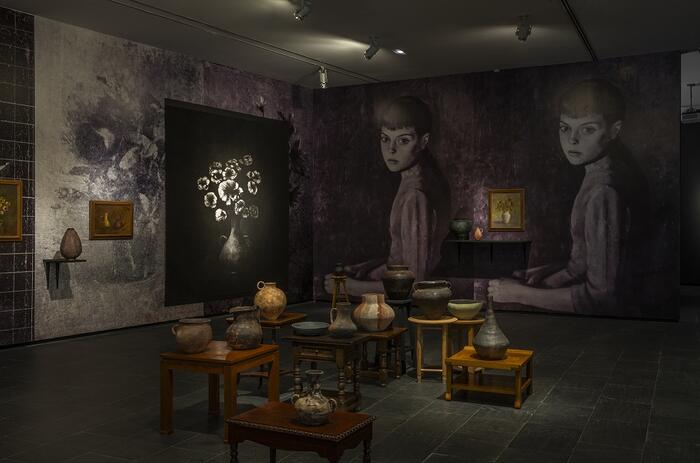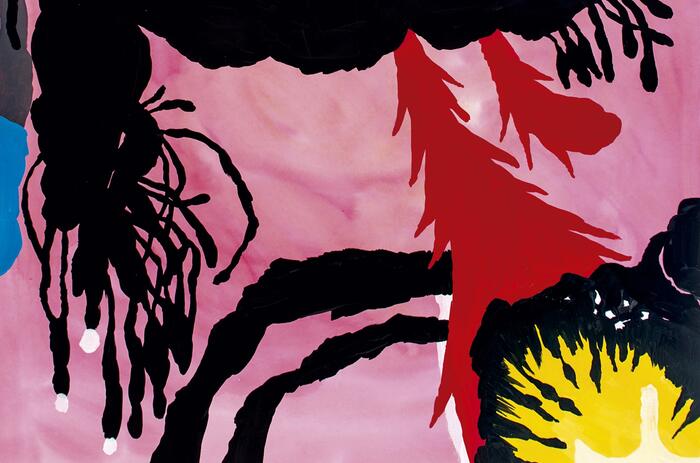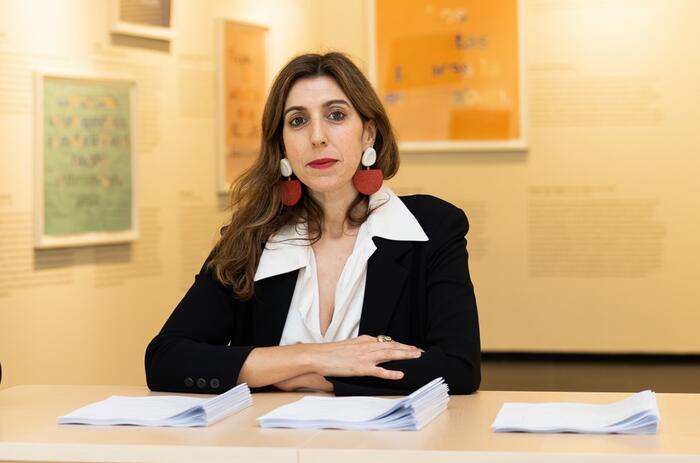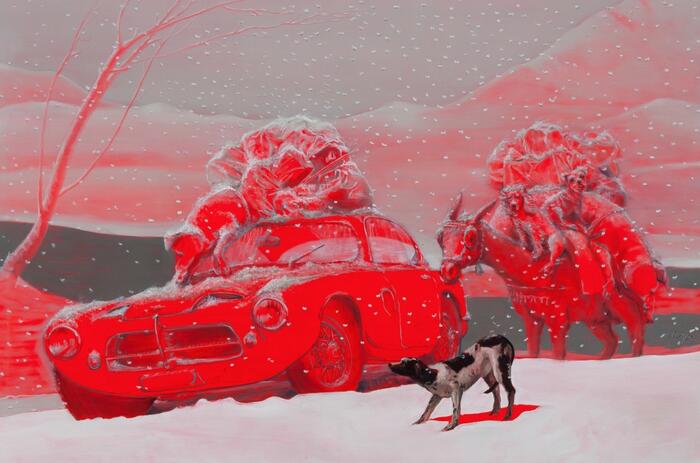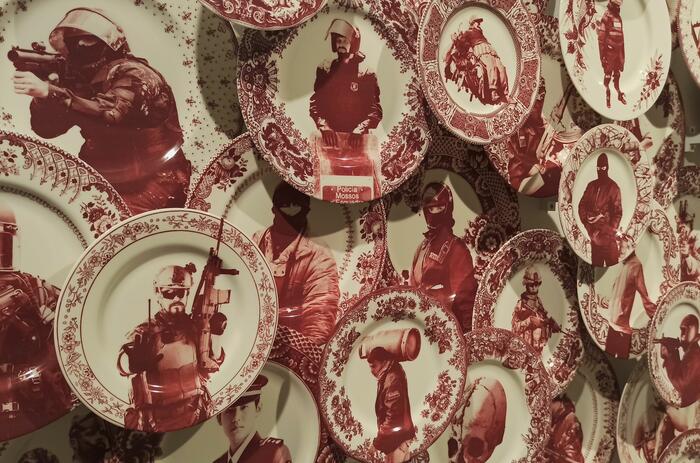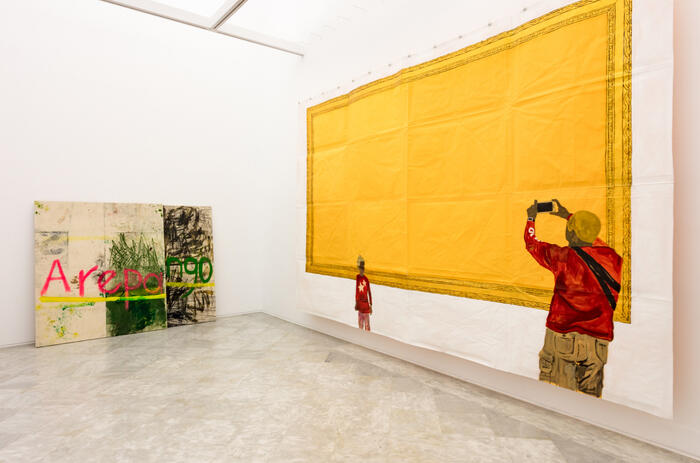PERFORMANCE AND MYTH IN HECTOR CANONGE
Héctor Canonge began to explore the possibilities of performance almost without being aware of it. With an extensive career in the field of new media and the art surrounding these technologies, and almost by inertia, he incorporates the use of his body in one of his installations, Schema CorpoReal, where his body covered by bar codes was scanned by the public so that, through texts that emerged referring to parts of his body, they ended up constructing a narrative of identity.
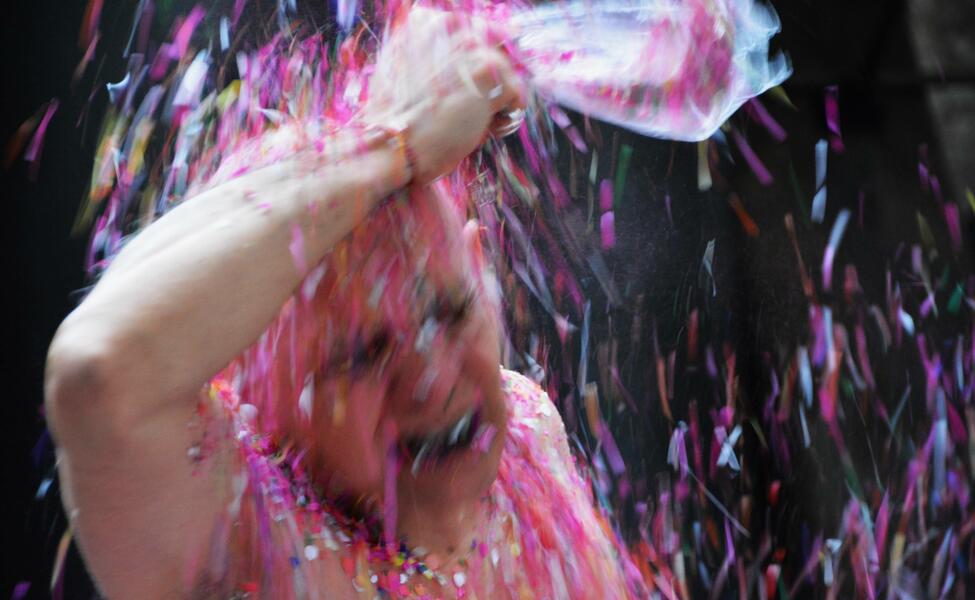
After a series of projects in which apparently antagonistic languages such as technologies and the digital were intermingled with the body and human identity, Canonge began to increase the presence of the analogue versus the digital. Much of the blame for this turn could be due to an incident in Istanbul that ended up with part of his digital and technological tools retained, so he had to reinvent himself.
From that almost involuntary need to explore new expressions through the body and without technological incursion, he consolidated a devotion for live art, for transmission and body language, to which part of the technique of the radical butoh will be incorporated, thus culminating the imaginary of his performative proposal. Within this evolution, Canonge comes across the myth and the ancestral and anthropological connection that each of the peoples have to make up MITOS, his latest performance that has recently premiered in Madrid's La Neomudéjar museum and that he will take to Europa and Africa over the coming months.
Exploring identity and that ethnography that also seems to be extrapolated to his person -he considers himself a Latino artist from New York, born in Buenos Aires of a Bolivian mother and Spanish father-, MITOS contemplates that approach to the essence of each one, but also indicates the need for the assumption of the originating essence. Canonge starts from the Andean oral tradition for this performative action in which he enters after undoing and presenting the multiple imposed identities, visual elements of great power in the development of this performance.
Flooded by a spiritual or, at least, introspective music, the evolutionary reflection of being and being has a radical preponderance. In fact, the environment in which the action takes place patents the influence of the same in the creative process, where Canonge also absorbs its essence to mould that radical expression of butoh -art that, in its becoming, combines post-war European and Japanese traditions- and the support of Andean rites. The evolution of MITOS absorbs all these elements, so that its representation in Europe and Africa in successive actions will incorporate elements of space and develop narrative elements that will form a performative piece in constant evolution and with which it underlines the importance of the inescapable acceptance of the being of each one and its ancestral conformation.
-
Mitos, de Héctor Canonge (foto_ Álvaro de Benito)
-
Mitos, de Héctor Canonge (foto_ Álvaro de Benito)
-
Mitos, de Héctor Canonge (foto_ Álvaro de Benito)
-
Mitos, de Héctor Canonge (foto_ Álvaro de Benito)
-
Mitos, de Héctor Canonge (foto_ Álvaro de Benito)
-
Mitos, de Héctor Canonge (foto_ Álvaro de Benito)
MITOS was premiered at the Museo La Neomudéjar in Madrid on April 26th and will be performed in June in Berlin at the Universität der Künst (UDK) and Orhan Kritisch Kunst, in July in Venice, and at the Emomé Art Festival in Lomé (Togo).

